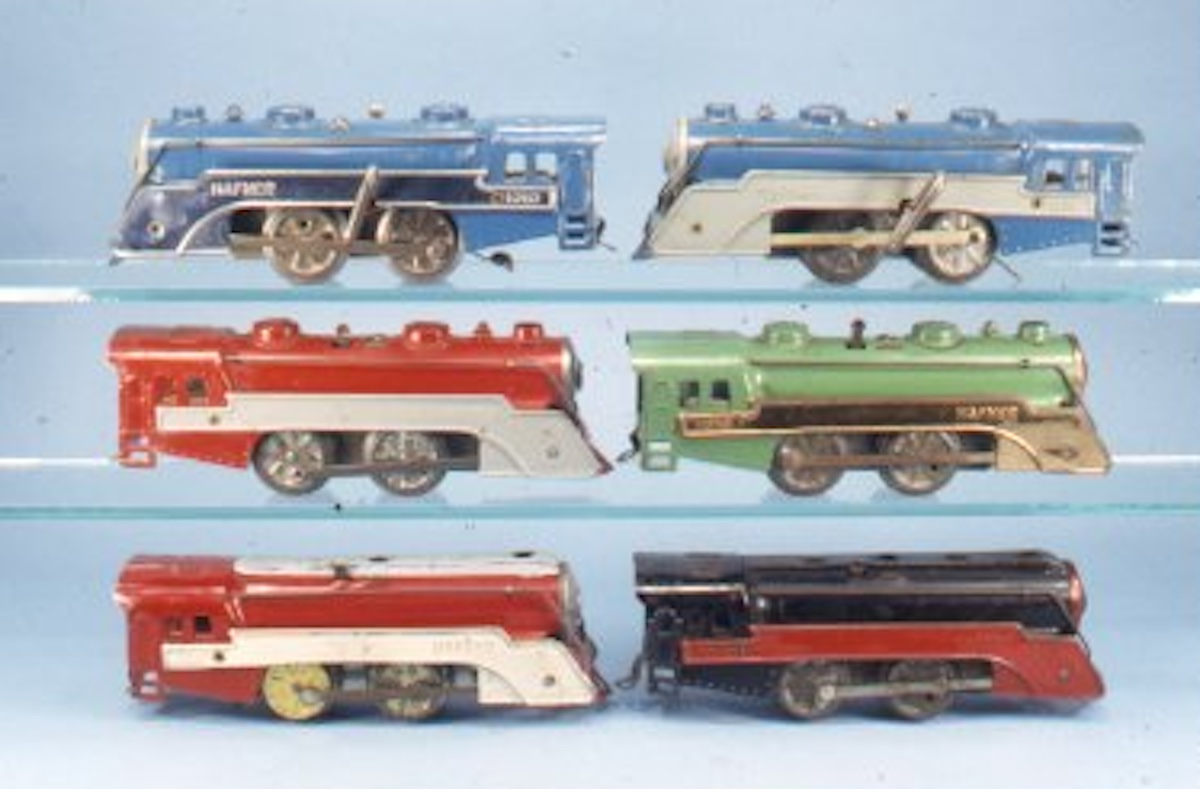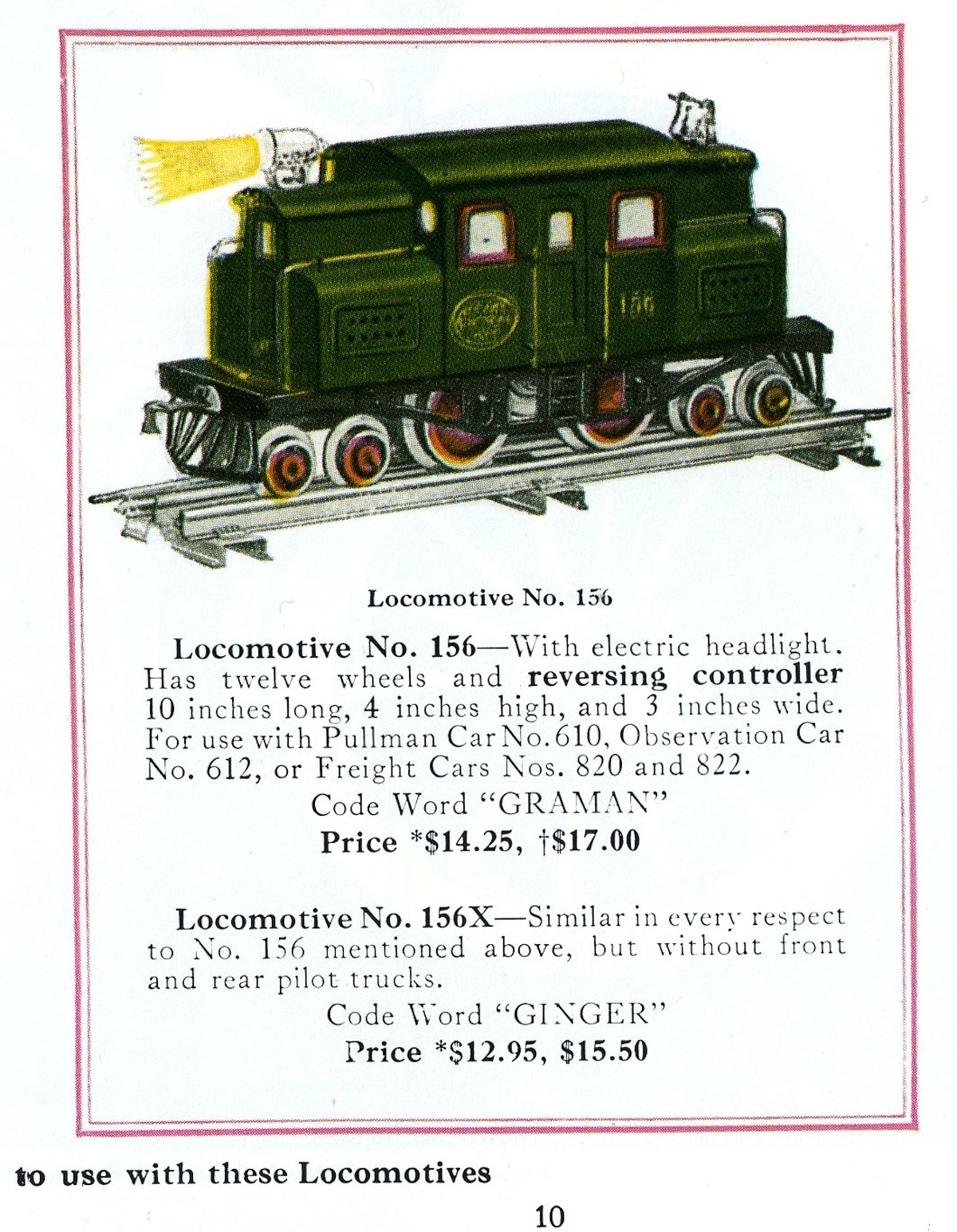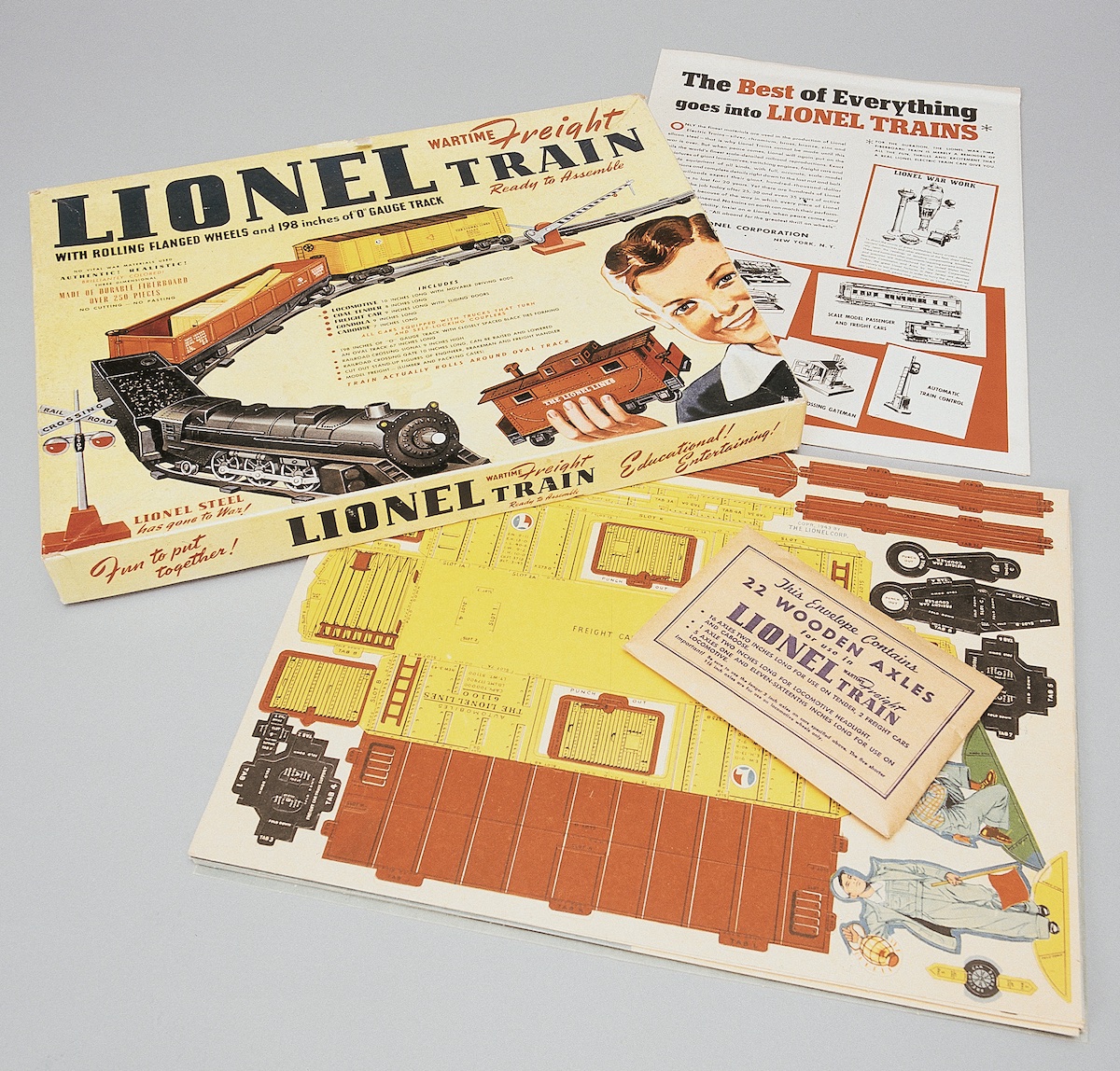Lionel No. 2245 Texas Special F3 Diesel A and B Units celebrate their 70th anniversary this year. The beautiful O gauge locomotives made their debut in the noteworthy year of 1954 as separate-sale items priced at $39.95 ($470.63 in today’s dollars) and as the motive power in a pair of outstanding O-27 outfits: the Nos. 1517W four-car freight set and 1520W three-car streamlined passenger set.
Besides being striking in appearance and powerful in operation thanks to the addition of Magne-Traction, the 2245 A-B combination has much to tell us about Lionel and its marketing at the pinnacle of the post-World War II period. With good reason, postwar expert Joe Algozzini picked the Texas Special duo when discussing “Locomotives We Love.” Let’s now take a close look at the classic diesels to expand our understanding of Lionel and its trains.
Expanding the F3 roster
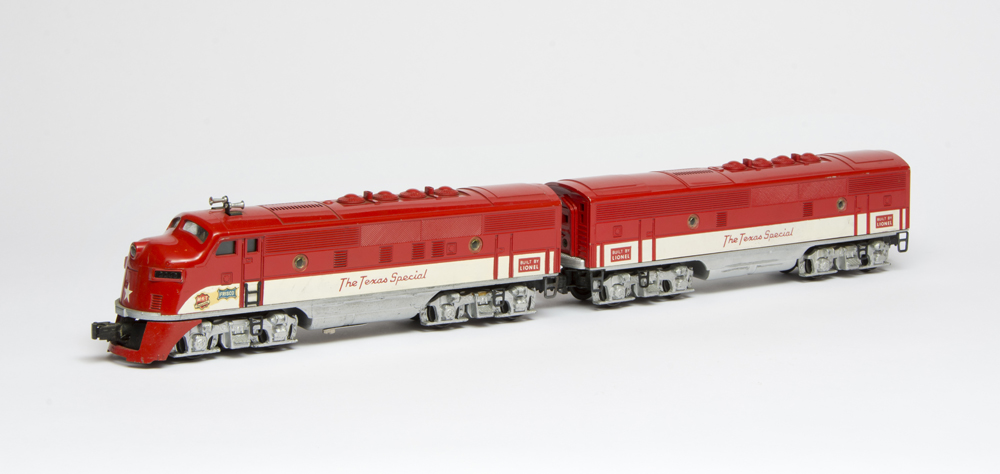
Marketing possibilities at Lionel multiplied after designers employed in the Engineering Department at the company’s factory in northern New Jersey completed work on the first replicas of an F3 diesel in 1948. Not to say that top executives quickly took advantage of those opportunities —only that they existed. Initially, corporate decision-makers cataloged models with just the names of the two renowned railroads whose investment had underwritten the research and development. New York Central and Santa Fe were all from 1948 through 1951.
A significant trend took off a year later, when Lionel brought out the next F3s. The silver-and-orange Nos. 2345 Western Pacific A-A combination came decorated for a western railroad, perhaps reflecting a campaign to bolster sales in a different part of the country. From then on, Lionel gambled with its diesels. They featured road names with regional appeal at best. A key example of what Lionel hoped to achieve was the No. 2245 Texas Special F3 A and B pair.
Indiana rival
Intense demands for electric trains after the war ignited fierce competition. Lionel acted to counter some of what its biggest rivals – the A.C. Gilbert Co. and Louis Marx & Co. – were doing. Small firms, content to nip at less-prosperous segments of the market, annoyed but hardly threatened the giant of the industry. Lionel paid attention to what firms such as Minitoys did with a trolley and Thomas Industries did with an old-time steam engine, but largely left them alone.
American Model Toys, based in Auburn, Ind., initially bewildered Lionel. AMT’s streamlined passenger cars and near-scale freight cars eventually sparked serious responses as Lionel refused to concede important and profitable fields. In time, AMT also introduced O gauge models of Electro-Motive F7 diesels that bothered Lionel, although it already ruled the roost with its more reliable F3s.
Members of the Engineering Department, like their peers in Lionel’s sales offices, tallied the diverse road names AMT used on its diesels. One, in particular, intrigued them. Bright red-and-white F7s came decorated, not for a railroad, but for a passenger train winning approval from travelers throughout the Southwest.
Something different
Not since the prewar period, with the introduction of the Standard gauge Blue Comet on the Central RR of New Jersey and the O gauge Flying Yankee on the Boston & Maine had Lionel cataloged a model based on a full-size passenger train. But its competition with AMT explained the decision to paint and letter F3 A and B units for the Texas Special, a train running between St. Louis and San Antonio over the St. Louis-San Francisco Ry. and Missouri-Kansas-Texas RR.
Cautious marketers proved reluctant to pair the 26-inch-long combination they brought out in 1954 with streamlined passenger cars bearing Texas Special markings. Only the diesels were going to advertise that interstate express.
Yet those executives did take a couple of bold steps with the new models.
To start, the non-powered unit they matched with the powered A unit ended up being a B unit. Never before had Lionel done that with its F3 diesels. The New York Central, Santa Fe, and Western Pacific A units had come with an unpowered A unit. Lionel never made a B unit in the WP elegant paint scheme.
Second, planners ultimately designated the Texas Special A and B units as O-27 entries. Their decision cast the 2245 combination as the first F3s assigned to the less prestigious half of the train line. A bold choice sure to pay big dividends.
The 2245 duo, as already noted, led both a freight outfit and a passenger set in 1954. Lionel put them in only a passenger outfit in 1955. That new item, the No. 1536W, included three new short streamliners to go with the A and B units.
Real beauties
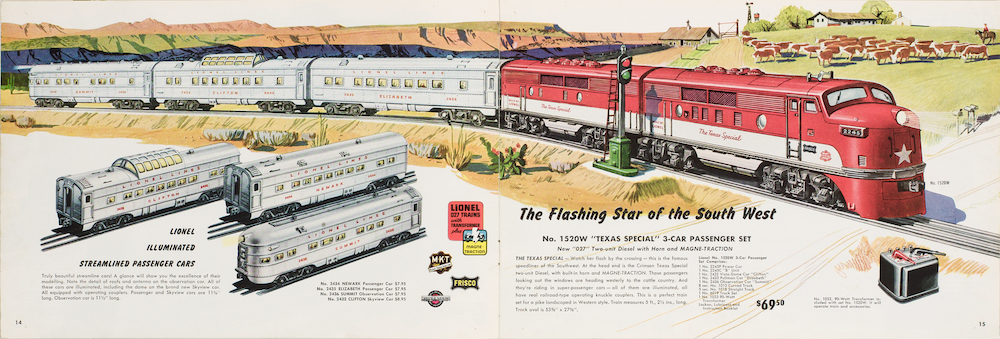
Some of you may be getting the sense that Lionel had allowed the Texas Special to slip in quality for its second and final year in the cataloged lineup. If this is the case, then you are advised to please dismiss that notion immediately!
The 2245, in spite of being equipped with only one motor (horizontally mounted in 1954 and vertically a year later), muscled ahead with Magne-Traction and the standard three-position reverse mechanism. Further, the A unit presented a blinding headlight and an operating knuckle coupler on its pilot. Can’t forget the remote-controlled horn used to shock drowsy pedestrians and drivers at crossings.
Terrific looks distinguished the Texas Special. Early production featured a silver-painted chassis with a red-painted pilot and silver side frames with steps. Then the pilot evolved to silver, and the side frames were blackened chemically.
The plastic shells secured to the frame dazzled with their glossy red paint. Laborers masked the lower portion by hand before screen-printing each side white, with lettering and details carefully cut out of the tape to remain shiny red.
A white five-pointed star on the nose and two-piece ornamental horns on the roof added beauty. As did decals of the heralds of the sponsoring Frisco and MKT railroads. Little doubt Lionel surpassed a rival with its 2245 Texas Special.
Conclusions
Terrific as the 2245 combination looked and as satisfactorily as it ran, top individuals at Lionel concluded the Texas Special diesels had fulfilled all their marketing goals after just two years. That likely explained why the handsome units were used in only one cataloged outfit in 1955 and the separate-sale price had been reduced to a quite reasonable $29.95 ($351.51 in today’s dollars).
Are you hoping to add No. 2245 Texas Special diesels to your collection of postwar trains? Or thinking of operating them on your layout? The 2025 edition of Greenberg’s Pocket Price Guide to Lionel Trains values the 1954 version of the combination at $340 in good condition and $799 in excellent.






